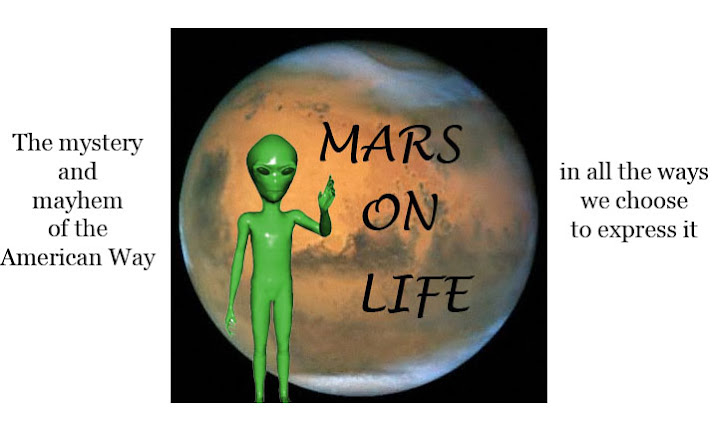
Nearly 40 years ago, Bill Blass started his eponymous fashion label, Bill Blass Ltd. In 1970, America entered a decade of transgressive politics, stagflation, oil embargo, increased crime, and the long, self-congratulatory run-up to the nation's bicentennial. The 1970s quickly mothballed the values of both the 1950s and the 1960s, two decades that had continued to enjoy the rude health of post-World War Two accomplishment. The reflected glow of family values, Camelot, and the moonwalk now gleamed on a nation pockmarked by social and economic blight.
Everywhere but on Seventh Avenue, that is. There, Bill Blass designed a label that would reflect none of this nonsense. His contemporaries didn't design that way either; by the time the Son of Sam was captured Halston had outlined a near-Copernican philosophy of modern fashion design. In Paris, St. Laurent launched his most sumptuous collection to date. The big designers of that era were autonomous of reality, although to look at Galliano today is to render the degree of separation comparatively questionable. Still, one did not wear Blass with Earth Shoes.
No one expected that fashion need be an exact mirror of the times, or that fashion would one day be held to sociopolitical correctness in a manner that recalled the political demands of the 1960s counterculture. Seventh Avenue in the 1970s held a mirror only to a queerly Cheeveresque world of cocktails and caviar far removed from enforced busing, Love Canal, and Gerald Ford's clumsy attempts at perambulation. The useful function of fashion was simply as a status decoration, not as a reminder of any collective responsibility to society at large.
Within the confines of this special culture, Blass designed stylistically and contextually, if that context were given as the demands of a shrinking social class that clustered north of 59th Street in Manhattan. This set of clients lunched at the Russian Tea Room, watched Bobby Short perform at the Café Carlyle, and in general were unaware of their own imminent extinction.
Blass was synonymous with American good taste, derived largely from careful tailoring and that even more careful client roster. These were the socialites, not the jet setters, and Blass's designs fit their town-and-country lifestyle in a way that the work of fellow American designers Ralph Lauren and Calvin Klein could not. The brand sold at a different level-that is, not to those whose lifestyles were defined by the outdoorsy and the sportif.
The possibly erroneous news that Peter Som may have stepped down as creative director of the Blass brand comes on the heels of the dismissal of Marco Zanini from Halston. Casualty or not, the speculation over Som's potential departure doubly reinforces the issues inherent in brand revival. Unlike the situation at Halston, the Blass label has had only two creative minds at work since Blass's death, yet the number of designers at both labels taken together seems to indicate something more awry than mere evolutionary pains.
In both instances, the new designers worked from the past forward and not the other way around. Neither appeared to approach the task theoretically. In 1970, there was no fashion pluralism; now to not participate in the common good of responsible fashion--whoever one may be--smacks of the anachronic. On the surface, it appeared that the main issue with brand revival was with trying to foist yesterday's clothing on today's consumer, who may or may not have heard of the brand in the first place. Perhaps it was her mother's brand, or that worn by the octogenarian dowager in the penthouse above. That's how it appeared, as if its very metabolic health were in rapid decline, but the real concern lay in the hostile guerrilla takeover of fashion's New Order. Clothing now must mean something, must stand for something, and must denote something more than good taste or social order. Even if it stands for nothing more than its self-propelled cult of omniscience (Chanel), it must do so with outsized and potentially laughable conviction. Som's outing for Blass, with its naive overlapping of 1970s status and today's eco-political fashion zeitgeist, ended in a mixed and muddled message. Not that Som and company were aware that this is what they were doing, but it read as an uncomfortable attempt at cohabitation.
Reviving a brand is much like reviving a Broadway musical. For every stellar remounting (Cabaret, Chicago) there are two or three Bells Are Ringing, 42nd Streets, and Music Men. Were the Blass creative team to have looked at the revival of Cabaret, they'd have seen a staging underscored by a new, modern urgency that forwarded, rather than mimicked, the original's preening grotesquerie. Instead, Peter Som became lost in the old lookbooks, mindfully keeping the keys to a kingdom that had died of bloat almost two decades earlier.
This is not to say that playing it safe wasn't necessarily playing it smart; the market had to be gauged (if there were any market at all; census, anyone?) relative to an impossible number of interlocking elements. The largest of these was the effect of the Internet on fashion and the scope and size of fashion's new critics and important consumers, the latter made up of Young Hollywood and pseudo-celebrities. Since this appeared not to have been taken into account, the most Som could do was to address the issue structurally, with a collection of the master's impeccable tailoring and fine cut and very little else of retail value.
In the case of both Blass and Halston, what might have appeared to be a reticence to commit too highly to a new aesthetic is instead a failure to read the market at grassroots level. Today's market is just that--grassroots--in a way that evokes the 1960s and that era's call for change and accountability, most notably on a personal level. There is also an opportunity for the fashion equivalent of a cadavre exquis, though taken away from its Surrealist origins by applying considered rationale. This is too risky, of course, but it would work as a creative exercise given the dogged reliance on the old lookbooks.
Som's leaving notwithstanding, it's said that there will be no Bryant Park for the Blass label. Perversely, this may appeal to that group that feels the fashion show is a dinosaur imperative and nothing but an ego-strut for a label's figurehead and its parent company. With or without Som, the creative teams needs to take a hard look at the dissolving social structure and why fashion needs a new philosophical sobriety and psychological depth before it attempts to build another collection for a vanished race.
Image: Bill Blass by David Pena.
Monday, July 28, 2008
The Battle of the Som
Labels:
Bill Blass,
Peter Som
Subscribe to:
Post Comments (Atom)









2 comments:
Ain't it the truth, S. Reviving a brand is like restaging a broadway musical! Who knows what integration of "old favourite" and "new special something" makes a hit. I think it's pretty telling that the corporate teams behind the next wave Blass and Halston are shooting the messengers, for sure...
You said it all in the last paragraph.
I think these companies will have to take the market's pulse first, and design second, next time.
Post a Comment